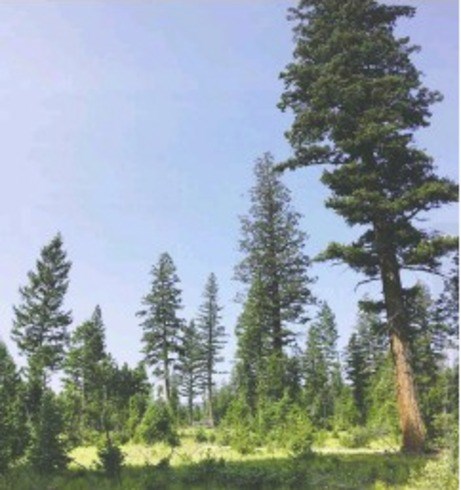The dry Douglas fir forests of B.C.'s Interior ovver a stark illustration of how climate change is going to alter the province's landscape, as well as the forest sector's shortcomings in looking after the woods, according to new research by the B.C. Forest Practices Board.
Technically, the region is referred to as the Interior Douglas-Fir (IDF) biogeoclimatic zone, an area of dry forest and grassy understory that covers a swath of the Interior that stretches from the Kootenays and the Okanagan up into the Cariboo plateau.
It covers five per cent of the province now, but shifting climatic conditions are expected to nearly double it in size over the next 60 years. However, research by the forest practices board has shown that the forestry industry is doing a mediocre job of managing the area for the future.
Timber companies relied too much on clearcutting and didn't do enough selective harvesting that leaves a varied age structure of trees behind that mimics natural disturbances, which leave shade to help new trees in the IDF to regenerate. That is important because lumber producers running out of usable trees in areas ravaged by the mountain pine beetle are increasingly looking to the IDF as another source of timber.
"(The region) is not insignificant," said board spokeswoman Darlene Oman, "(and) the board thought the results are important because they have implications for the longer-term timber supply. If the province is expecting these areas to produce a future crop of trees and they're not necessarily growing back the way they think they are, that has timber-supply implications, and then it also has implications for wildlife habitat."
In its investigation and report on the IDF, the board found that timber firms were meeting replanting objectives and doing a good job of increasing the diversity of tree species that were replanted -- getting away from lodgepole-pine monoculture -- but weren't always applying best-management practices.
Investigators looked at harvested cut blocks in four dierent areas that were logged between 2007 and 2017, and found that 60 per cent of them, 44 of 69 sites, were in poor or marginal condition and unlikely to be healthy forests once they reach free-growing status.
"These sites may not grow to healthy forests in the long term, and that has implications for future timber supply and other values, such as wildlife habitat," said forest practices board chairman Kevin Kriese in releasing the report.
Kriese said the board is asking the province to reassess its longterm objectives for reforestation and update those along with the standards it expects timber companies to meet, in light of expected changes due to climate change.
In its conclusions, the forest practices board requests that government respond to the board by Feb. 21, 2021, and if it accepts the recommendations, submit a progress report on the measures it's taking within 12 months of the report's publication.
And the big decision may be whether to let the IDF become a major source of timber for forest rms to harvest at all. The IDF zone is one of B.C.'s driest ecosystems that could be pushed into becoming more grassland than forest by changes in rainfall coming with climate change, said University of B.C. forestry specialist Sally Aitken.
"And the forest management practices can accelerate that or slow that depending on how they're done," said Aitken, a professor and associate dean in UBC's department of forests and conservation sciences. "That zone is a tricky one to manage."
The type of timber harvesting that works best in the zone, partial cutting versus clearcutting, that maintains ecological conditions for successful regeneration is a more expensive type of management, Aitken said.
"Therein lies the challenge," she said. "Is that the right place to be our wood basket for the province?"



